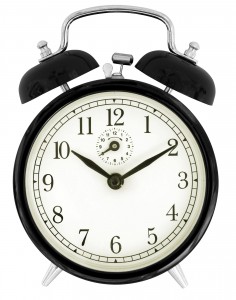 As the shrill scream of your morning alarm slices through your dreams of flying over tall buildings, and otherwise saving the world from destruction, you realize that your peaceful respite from wakefulness has unceremoniously come to an end.
As the shrill scream of your morning alarm slices through your dreams of flying over tall buildings, and otherwise saving the world from destruction, you realize that your peaceful respite from wakefulness has unceremoniously come to an end.
Morning has broken and it’s time to start your day.
You slowly rub the sleep from your eyes, fling the warm, enveloping covers off your body and allow the frigid air of your bedroom to jolt you further from your reverie.
“Why does my back feel so stiff?” is your first, fleeting thought as you hunch forward on the edge of your bed, pawing for your fuzzy slippers with your feet. Your sleep-drunk legs have trouble locating their targets so you bend farther forward through your back to get a better look. From this forward bent position, you’re finally able to find the foot-hugging sanctuary of your slippers and your daily routine carries on.
You pull yourself to a somewhat upright position, stumble to the bathroom on your unsteady legs, turn on the tap, bend down to the sink and splash the last vestiges of sleep from your being…
So maybe you don’t dream of saving the world, and perhaps you don’t have fuzzy slippers. Heck, you might not even wash your face. But if you’re like most people, you likely go through some of the same movement patterns described above.
What’s the big deal?
The big deal is that your intervertebral discs (yup, the same discs that are often erroneously described as “slipped”) are actually in a hydrated state which unfortunately puts them at higher risk for injury with certain types movements, according to Dr. Stuart McGill’s research.

Why do the discs “inflate” overnight?
After having spent six to ten hours in a horizontal position while sleeping, the effects of gravity are minimized through your spine. So instead of being compressed (as they are when you’re upright), your discs are unloaded to a certain degree and actually suck up fluid like a sponge. This is why you’re actually taller after waking.
What can you do about it?
This is the simple part. Avoid flexion (bending forward) through your spine until the discs have had a chance to lose some of that fluid. See, I told you, simple.
McGill’s research suggests that it will take about an hour after waking for this to occur. After that golden hour, it’s safer to bend that way.
Now the hard part: avoiding flexion means you’ll have to modify how you get out of bed, how you sit on the edge of your bed, how you wash your face, brush your teeth and even sit on the toilet.
And depending on how fast you are at getting pretty in the morning, it would also mean you’ll have to avoid slouching at the breakfast table, if you even eat breakfast.
Yup, these are all automatic habits you’ve been reinforcing for years. It’s not going to be easy to change them, but as many former low back pain sufferers will tell you, they much prefer dribbling toothpaste down their chins than having bolts of lightning shoot down their legs.
Yours in movement.
Team Primal

(inside Peak Performance Golf)